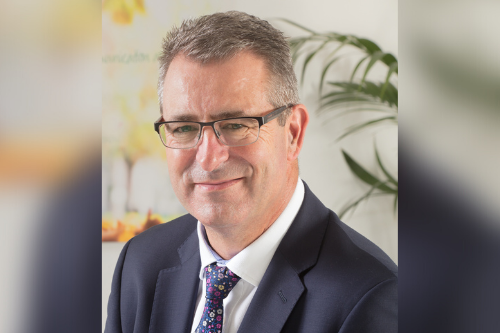

The following is an opinion article written by David Haynes (pictured), underwriting director, ARAG UK. The views expressed within the article are not necessarily those of Insurance Business.
The Official Injury Claim service (OICS) has now been operational for about two months and, while the jury will have plenty of deliberating to do before a final verdict can be handed down, there is certainly a bit more evidence for us to consider in assessing whether OICS is up to its task.
Very little defence could be offered to the charge of OICS being repeatedly delayed and yet still rushed into service, while the mitigation offered by the pandemic is of limited relevance. On the other hand, despite some reported teething problems, the service was successfully launched at the third time of asking, and does not appear to have fallen at the first hurdle, as some predicted.
While those early glitches (which apparently included trouble entering apostrophes, double-barrelled names and the number 5) do not sound particularly significant or difficult to resolve, how much they have contributed to lower-than-expected use of the service, particularly by litigants in person, could indicate a deeper problem with users’ confidence in the process.
Many of the charges levelled at OICS had been made long before the service was launched, last Bank Holiday Monday (May 31). The disparity of arms that it promotes between claimant and defendant is very hard to refute, but it will be some time before we have enough data to assess the consequences of this and how badly access to justice is denied, as a result.
We’ll also have to wait for more evidence to be gathered before we can judge whether the process has succeeded in its primary purposes of reducing the number and overall cost of personal injury claims.
The related question of whether motorists will ever see the much-promised £35 reduction in premiums has already been so obscured by both the everyday ebb and flow of the motor market and the quite exceptional circumstances of the pandemic, as to prejudice any notion of a fair trial.
Those who predicted, even before the pandemic, that such a technicality would inevitably be called upon can pat themselves on the back, if not on the wallet.
The most serious questions that OICS has to face after just a few weeks of operation are still around its complexity. Early reports suggest that the number of claims made through the site since May 31 are indeed much lower than anticipated.
How much this is a result of claimants being put off by the 64-page user guide, a lack of confidence in having to assess the value of their own claim or simply being unaware of the need to use the service, which has scarcely been promoted, is difficult to determine.
While low usage of the site might normally be considered a fundamental failure, a cynic might argue that deterring injured parties from making claims was all part of the plan.
The question of so-called hybrid or mixed injuries still looms large. That the MIB announced a cross-sector working group to explore the issue just after OICS was launched, despite it having been repeatedly raised in the months before launch, seems like measuring up for a stable door after most of the horses have bolted.
Whether the incidence of such hybrid claims, that has been increasing since long before launch, does indeed suggest that the system is being gamed, remains to be seen. Like so many questions in this trial, the evidence that OICS itself can provide will be most illuminating.
Data from the OICS website should tell us how many litigants in person are embarking on the process of making a claim but giving up; whether, as some have said, 90-95% of litigants are still represented; and many other details.
All parties are waiting to see what evidence the key witness is prepared to share.
David Haynes, Underwriting Director, ARAG UK
David has worked in the legal expenses industry for more than 35 years, undertaking a variety of roles including underwriting, sales and product development. When ARAG launched its UK operation in 2006, David took control of the Underwriting and Product Development function. In February 2018 David was appointed to the ARAG UK Board to help shape the future strategy of the business.
Under the guidance of David and the team at ARAG UK, the company has developed into one of the most successful and respected businesses in both BTE and ATE markets, always guided by its parent company’s founding principle, that all citizens should be able to assert their rights, regardless of their means.
In recent years, David has been instrumental in a number of ATE test cases, most recently the West v Stockport NHS Foundation Trust and Demouilpied v Stockport NHS Foundation Trust which has been hailed as a triumph for access to justice for the victims of clinical negligence.
